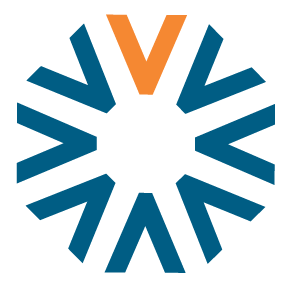Blog
Unlocking Staffing Efficiency: The Power of Advanced Planning and Scheduling
Wednesday March 13, 2024
In today’s fast-paced business environment, managing a large workforce and scheduling their shifts efficiently has become increasingly crucial for organizations to maintain efficient operations. Organizations can optimize their resources, improve productivity, increase retention, and reduce costs by streamlining workforce management and scheduling processes.
This blog delves into how advanced scheduling strategies, powered by technology, can transform operations, reduce administration time, and provide staff with greater flexibility and control over their work schedules.
The Challenges of Traditional Planning and Scheduling:
Manual shift planning is a time-consuming process that demands considerable effort, often involving intricate juggling of employee availability, skills, and shift preferences. Despite the best attempts to get it right, this hands-on approach is prone to human error, leading to scheduling mishaps that can disrupt operations and impact productivity. These errors strain workplace morale and can lead to significant financial losses due to understaffing, overtime costs, and inefficiencies. Additional challenges such as callout fatigue, under or overstaffing, and limited flexibility in shift preferences can significantly impact employee morale and retention.
Advanced Shift Planning and Scheduling in Action:
Integrating advanced shift planning systems into organizational workflows can transform how businesses operate, and employees interact with their schedules. These systems leverage data analytics to help forecast demand, identify optimal staffing levels, and allocate shifts efficiently, all while accommodating employee preferences to the greatest extent possible.
Benefits for Organizations
- Operational Efficiency: Automated scheduling reduces the time and resources spent on manual planning. Organizations can swiftly adjust to changes in demand, ensuring that staffing levels are always aligned with operational needs months in advance.
- Optimized Workforce Utilization: Intelligent shift planning solutions ensure that the right number of staff with the appropriate skills are scheduled, reducing the risks of understaffing or overstaffing
- Reduced Labor Costs: By optimizing shift allocations far in advance, organizations can minimize overtime expenses and reliance on external staffing solutions, leading to significant cost savings.
- Enhanced Service Quality: With the right staff in the right places, organizations can maintain high service standards, improving customer satisfaction and loyalty.
Benefits for Staff
- Greater Control and Flexibility: Advanced scheduling systems allow employees to input their availability and preferences, giving them more control over their work-life balance.
- Reduced Callout Fatigue: Automatically communicating multiple open shifts to available employees through a single callout alleviates the stress associated with receiving various calls a day.
- Fairness and Transparency: With intelligent automation, Shift allocations are based on predefined criteria, ensuring fairness and reducing the potential for bias in shift assignments.
Empowering Staff with Advance Scheduling
One of the most significant advantages of advanced shift planning is its employee empowerment. Organizations foster a culture of respect and consideration by allowing staff to voice their scheduling preferences, select their preferred shifts in advance, and view their shifts well into the future. This level of agency enhances job satisfaction, promotes a better work-life balance, and ultimately leads to a more engaged and motivated workforce.
Looking to learn more about flexible work schedules? Check out – The Importance of Flexible Work Schedules for Millennials and Gen Z
Vocantas Schedule Planning Solution
Vocantas provides an intelligent schedule planning solution that offers the benefits of advanced shift planning. Managers can prepare schedules in advance and automatically communicate multiple open shifts to available employees through a single callout. They can also track and manage schedules in real-time and ensure staffing requirements are met in advance.
With Vocantas’s in-depth data tracking, organizations can forecast staffing requirements based on historical trends and open shift rates to ensure optimal staff utilization and cost reduction. Vocantas offers an easy-to-use interface to optimize workforce deployment, reduce administrative burdens, and provide employees with greater flexibility.
The transition to advanced shift planning is more than a technological upgrade; it’s a strategic move towards a more efficient, equitable, and employee-friendly scheduling system. By embracing solutions like Vocantas, organizations can overcome traditional scheduling challenges, reduce callout fatigue, and empower their staff with greater control over their work schedules.
Stay Connected!
Subscribe to our newsletter and receive all our news and updates.
Blog
Check out our
latest Blog Posts
Cutting-edge technologies, industry trends and best
practices workforce management.

Wednesday January 29, 2025
Optimizing Workforce Efficiency with Integrated Manufacturing Scheduling Software
The manufacturing industry operates on precision and efficiency. From raw material sourcing to final product assembly, every second counts. Yet,….

Wednesday January 15, 2025
Top 5 Nursing Home Software Solutions to Invest in for Efficient Operations
As staffing shortages and external factors continue to impact the healthcare industry, nursing homes face increasing pressure to provide high-quality….

Thursday December 19, 2024
Absence Management Guide: Tools to Maximize Workplace Efficiency
Managing employee absences effectively is a cornerstone of organizational success. A well-implemented absence management system not only ensures accurate payroll….






